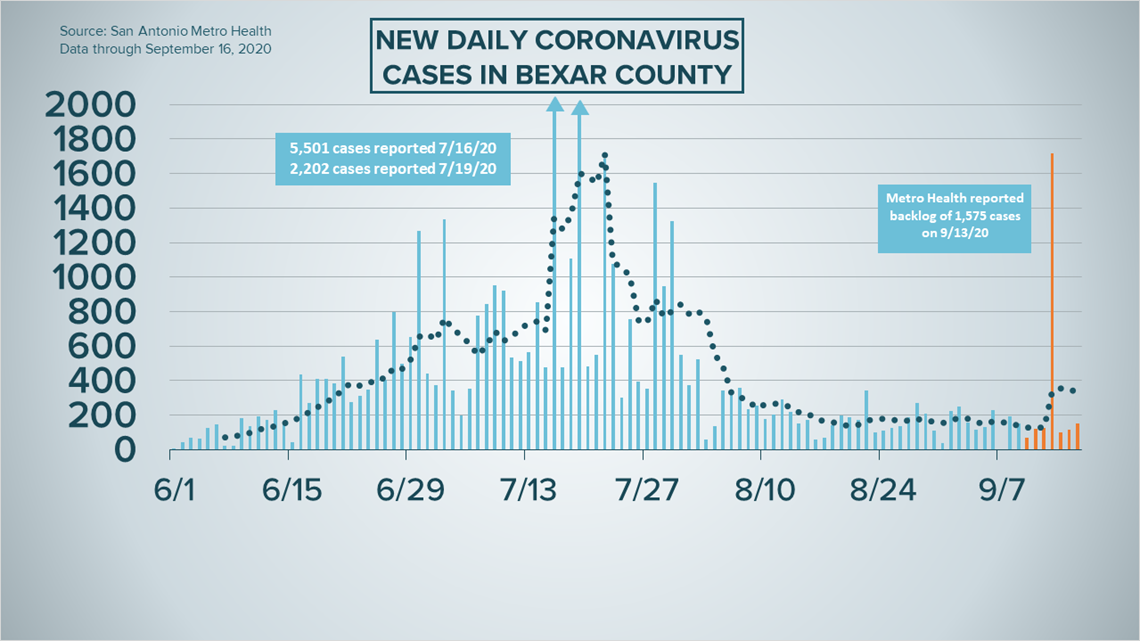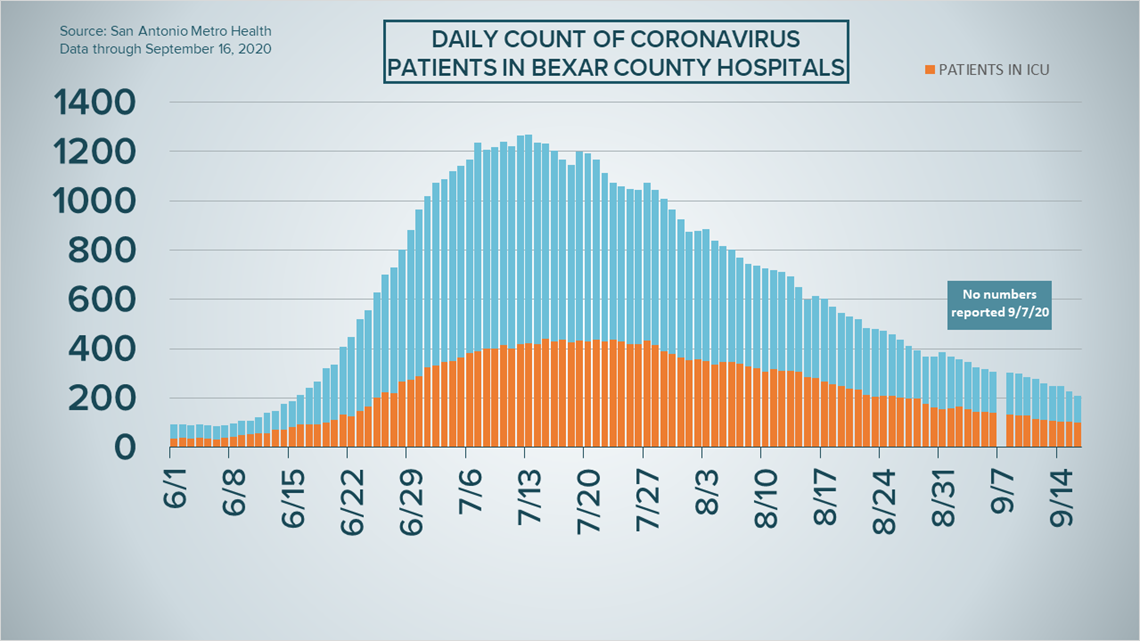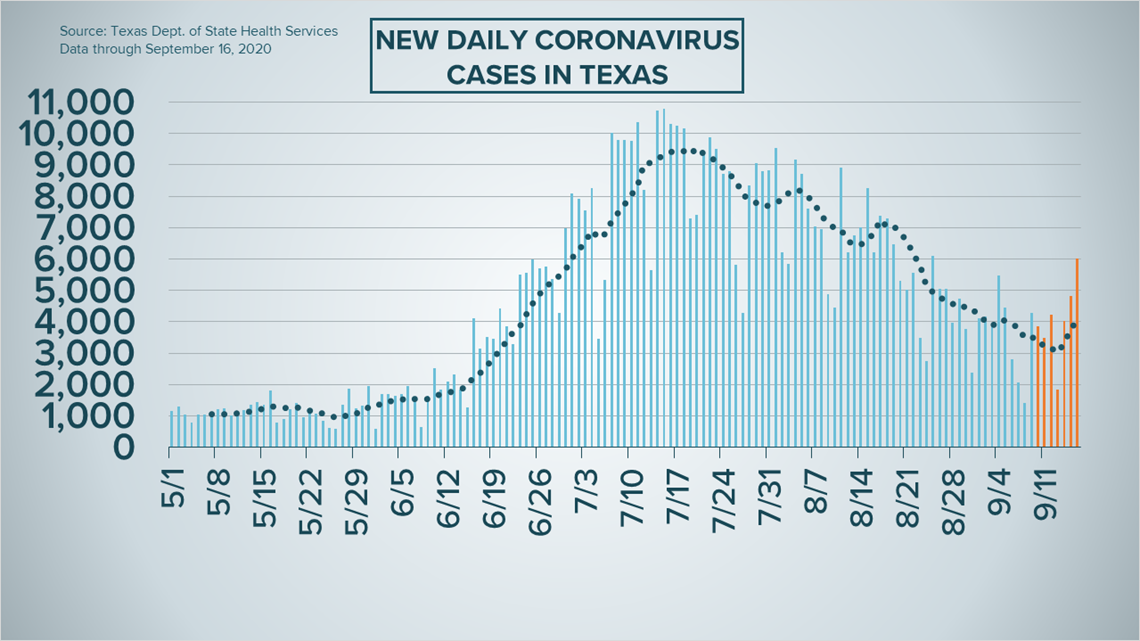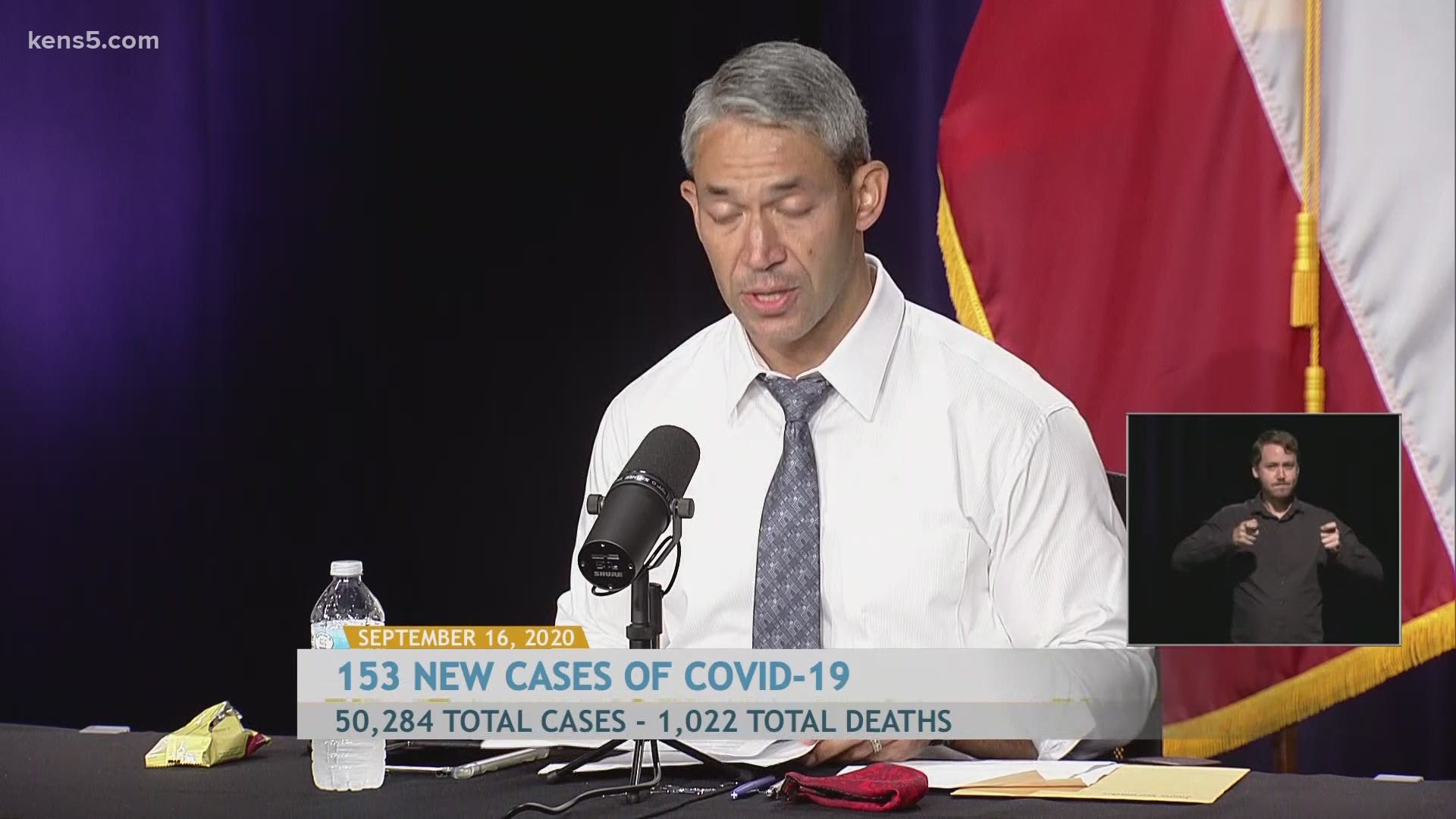SAN ANTONIO — We're tracking the latest numbers from the coronavirus pandemic in San Antonio and across Texas. Here are the latest numbers reported by Bexar and surrounding counties:
- Bexar County: 153 new cases were reported Wednesday, bringing the total number for the county to 50,284. The county death toll, meanwhile, rose to 1,022 after three new fatalities were reported.
- Comal County: The county reported 34 additional cases on Wednesday. No additional deaths were reported. There have been a total of 3,260 cases of COVID-19 in the county – including 2,584 confirmed cases – while 676 county residents have died. County officials say there are 304 active coronavirus cases, and 2,841 residents are considered recovered.
- Hays County: Officials in Hays County on Wednesday reported 32 new cases in the county and no additional virus-related deaths. As of Wednesday, there are a total of 5,697 lab-confirmed cases in the county (1,819 of which are active) while the death toll stands at 52. 3,826 residents have recovered from the virus.
How Bexar County is trending
We've tracked how many coronavirus cases have been confirmed in Bexar County from the time officials began reporting cases in March 2020. The graphic below shows the number of cases since June and charts those daily case numbers along a 7-day moving average to provide a more accurate picture of the overall coronavirus case curve in our area and the direction we're trending amid the pandemic.
On Wednesday, Mayor Ron Nirenberg reported 153 new coronavirus cases in Bexar County, raising the total to 50,284 since the pandemic began.
Nirenberg reported three deaths on Wednesday. In all, 1,022 Bexar County residents have passed away from COVID-19 complications.


Hospitalizations dropped by 18 on Wednesday, down to 210. The number of local coronavirus patients on ventilators (42) decreased slightly, while the number of patients in intensive care (100) dropped as well.


Wednesday, Mayor Nirenberg provided an update on COVID-19 trends in Bexar County. 21.6% of coronavirus cases in the county are among residents between 20 and 29 years old. 12% of the county's cases are pediatric; those cases also account for 3.7% of total hospitalizations.
Nirenberg also provided information on the most common underlying medical conditions among hospitalized coronavirus patients. Diabetes (37%), heart condition (15%), lung disease (7%), asthma (7%) and obesity (7%) were the leading medical conditions. 3% of patients hospitalized with COVID-19 were pregnant.
The most common underlying medical conditions among Bexar County residents who have died from the coronavirus include diabetes (37%), heart disease (20%), lung disease (10%), obesity (9%), and asthma (3.5%), Nirenberg said.
Coronavirus in Texas
The number of Texans who have tested positive for the coronavirus since the pandemic began grew by 6,026 Wednesday, according to the Texas Department of State Health Services. Of that increase, 3,409 are attributed to newly-reported coronavirus cases. Another 2,614 cases in the total stem from backlogs in Harris, Dallas, Collin, and Montgomery counties.
In total, 674,772 Texans have tested positive for COVID-19.


Meanwhile, the state also reported another 135 virus-related fatalities. In all, 14,478 Texans have died from coronavirus complications. The number of hospitalizations on Wednesday dipped slightly, to 3,249; that's 62 fewer Texans receiving treatment for COVID-19 symptoms compared to Tuesday.
State officials estimate 590,837 Texans have recovered while 69,457 remain ill with the virus.
As the school year continues for local districts, we are also keeping track of the most important updates for each, including links to dashboards created to track coronavirus cases.
Latest Coronavirus Headlines
- Teachers union launches its own COVID-19 tracker for Texas schools
- CDC Director: Masks may be better guaranteed COVID-19 protection than vaccines
- Wear The Gown: 'Zero Suicide' effort amid greater anxiety due to coronavirus pandemic
- President Trump defends coronavirus response at Wednesday briefing
- Pfizer COVID-19 vaccine trial reaches initial goal of 30,000 volunteers
- Big Ten votes to start football season in late October
- Coronavirus deaths in kids echoes toll in adults, CDC says
Coronavirus symptoms
The symptoms of coronavirus can be similar to the flu or a bad cold. Symptoms include fever or chills, cough, shortness of breath or difficulty breathing, fatigue, muscle or body aches, headache, new loss of taste or smell sore throat, congestion or runny nose, nausea or vomiting and diarrhea, according to the Centers for Disease Control.
Most healthy people will have mild symptoms. A study of more than 72,000 patients by the Centers for Disease Control in China showed 80 percent of the cases there were mild.
But infections can cause pneumonia, severe acute respiratory syndrome, kidney failure, and even death, according to the World Health Organization. Older people with underlying health conditions are most at risk.
But infections can cause pneumonia, severe acute respiratory syndrome, kidney failure, and even death, according to the World Health Organization. Older people with underlying health conditions are most at risk.
Experts determined there was consistent evidence these conditions increase a person's risk, regardless of age:
- Chronic kidney disease
- COPD (chronic obstructive pulmonary disease)
- Obesity (BMI of 30 or higher)
- Immunocompromised state (weakened immune system) from solid organ transplant
- Serious heart conditions, such as heart failure, coronary artery disease, or cardiomyopathies
- Sickle cell disease
- Type 2 diabetes
The CDC believes symptoms may appear anywhere from two to 14 days after being exposed.
Human coronaviruses are usually spread...
- Between people who are in close contact with one another (within about 6 feet).
- Through respiratory droplets produced when an infected person coughs, sneezes or talks. These droplets can land in the mouths or noses of people who are nearby or possibly be inhaled into the lungs.
- Some recent studies have suggested that COVID-19 may be spread by people who are not showing symptoms.
Help stop the spread of coronavirus
- Stay home when you are sick.
- Eat and sleep separately from your family members
- Use different utensils and dishes
- Cover your cough or sneeze with your arm, not your hand.
- If you use a tissue, throw it in the trash.

